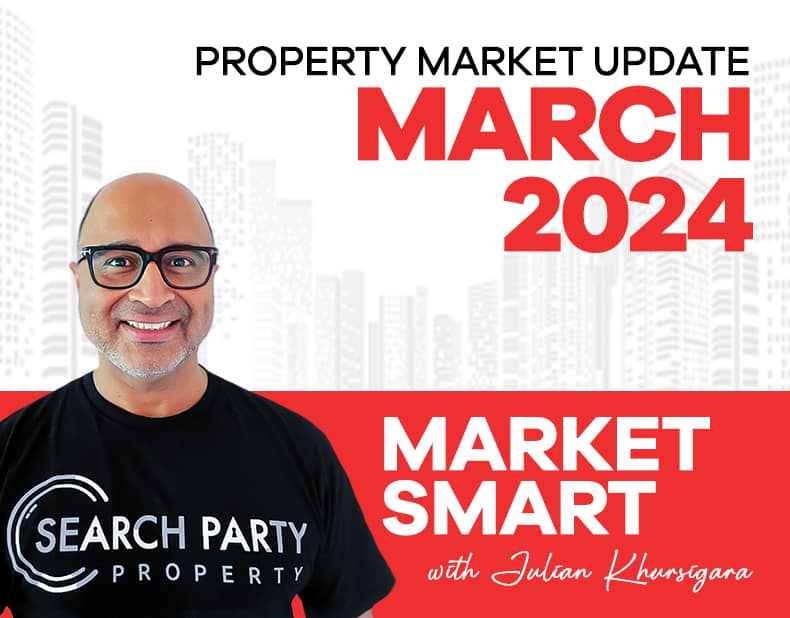- The first step is making the call.
- 1300 022 482
- hello@searchpartyproperty.com.au
Can We Trust Property Market Values?

In our previous article, we explained how Hedonic Value Indices (HVIs) such as those published by CoreLogic, can measure changes in property market values, despite only a small number of houses having recent sale prices.
From that article, you’ll remember that the accuracy of a HVI relies upon details about property quality – bedroom counts, bathroom counts, land size, construction date, are all things that HVIs use to better provide context for sales that have taken place.
In other words, a house selling for double the local median, probably has much better features than other houses nearby. Knowing this, we don’t conclude that the value of the entire area has doubled. Since we’ve accounted for the higher quality of that property, we know it was an outlier, and we can produce a more accurate estimate of market change.
On paper, it sounds like a reasonable approach, but are there any potential weaknesses?
Yes, a few.
To begin with, there are several concerns that aren’t specific to HVIs alone, but would also apply to any attempt at calculating market values. These include:
Data Quality and Availability
Property market data can often be incomplete, outdated, or inaccurately recorded, posing challenges to accurate valuation estimates. Incomplete data can lack crucial information about property attributes, sales history, and market trends, making it difficult to assess the true value of properties and identify market trends accurately.
Another issue is the challenge of maintaining data quality over time, with information needing to be regularly updated and validated to ensure accuracy and relevance. Changes in market transactions or regulatory requirements can affect the integrity of value models, meaning continuous efforts to maintain data quality and consistency are vital.
Market Dynamics and External Factors
We all know that house prices are deeply tied to a variety of external factors and market forces which in turn influence property market activity.
Macroeconomic conditions, new government policies, interest rates, and demographic trends are among some of the key external factors that can significantly impact property market performance.
With how qualitative and far-reaching these external factors can be, incorporating them into an accurate reflection of up-to-date market value can be incredibly challenging.
Some external factors are also more challenging to quantify than others – things like natural disasters, geopolitical events, and regulatory changes can all introduce new levels of volatility and uncertainty into the market, further complicating the accuracy of market models.
Of course, there are also other potential issues that apply more to the specific approach used by HVIs:
Faulty Assumptions
One major assumption of any HVI, is that everyone considers ‘better’ property features with the same level of desirability.
As SQM Research’s Louis Christopher put it:
“Not everyone likes a swimming pool, yet the hedonic model assumes we will all desire one.”
Taking this example, buyers could well place vastly different value upon swimming pools, and trends among these preferences could even vary significantly from region to region – potentially to due to factors like colder or warmer climates.
Bound up in this assumption of consistent preference, is also the assumption of perfect rationality – that buyers will look to maximise their satisfaction in the way we would expect them to (e.g. always choosing the house with four bathrooms over the house with three bathrooms).
We know from experience that this simply isn’t the case – people are drawn to homes for all kinds of seemingly irrational, personal reasons, even when purchasing an investment property. Buyers may be partial to a certain architectural style, or a certain floorplan, or prefer a particular kind of decorating, or they may even prioritise homes that have potential for further developments and renovation, or blocks that aren’t on a slope, or a home with a nice view, or a well-maintained garden…..
The list of attributes that are either difficult to account for, or simply cannot be accounted for, is almost endless. These are all factors that help to create varying preferences from person to person, or even from region to region, and undermine the major assumption of the HVI approach.
So, can we trust the figures?
The HVI remains one of the best approaches we have for understanding property market trends. They may not be flawless, as we’ve explored in this article, but the indices offer valuable insights into changing house prices by taking into account property quality.
The Law of Large Numbers provides some assurance that despite variations in individual preferences among property buyers, the collective behaviour of many buyers helps to smooth out significant biases in calculated house values. As such, it’s not surprising that CoreLogic’s HVI remains such a valuable tool for buyers, sellers, investors, researchers and even policymakers in understanding the complexities of the real estate market.
As we’ll explore in a future article, no approach is perfect, and hedonic models do have some limitations. However, hopefully this article has given you some idea of how these models work, and why they have become so widely relied upon within the Australian real estate industry.
Want to discuss this further?
For expert guidance in property strategy, and what it could mean for you as a property investor, book in for a free consultation to make informed decisions, tailored to your investment goals. Don’t let affordability challenges hinder your success. Act now with Search Party Property!




